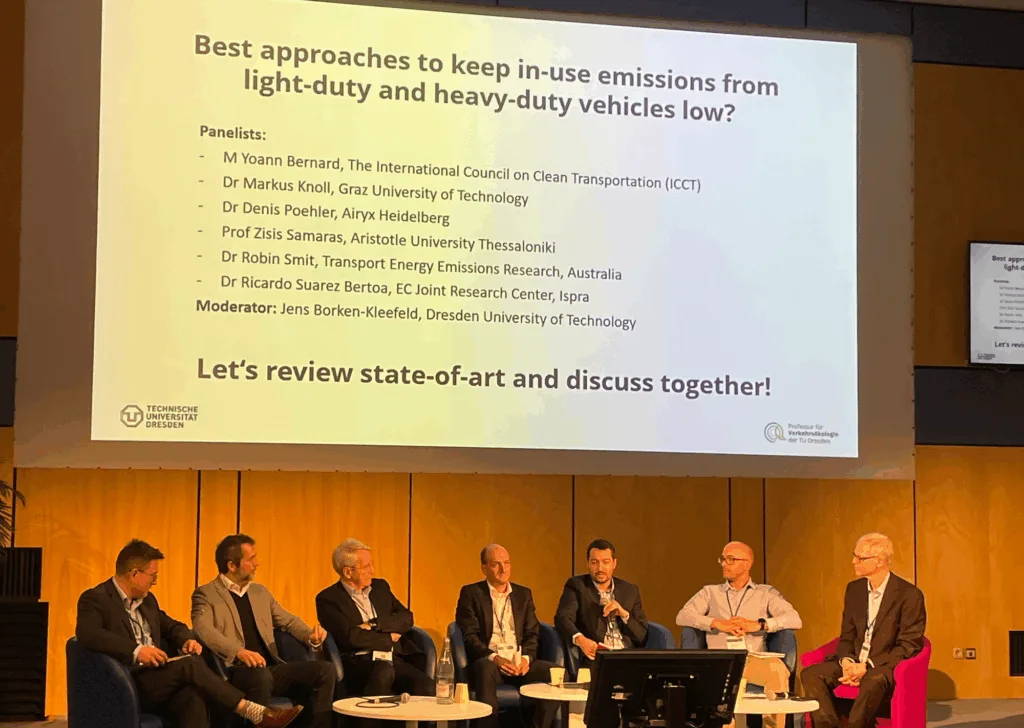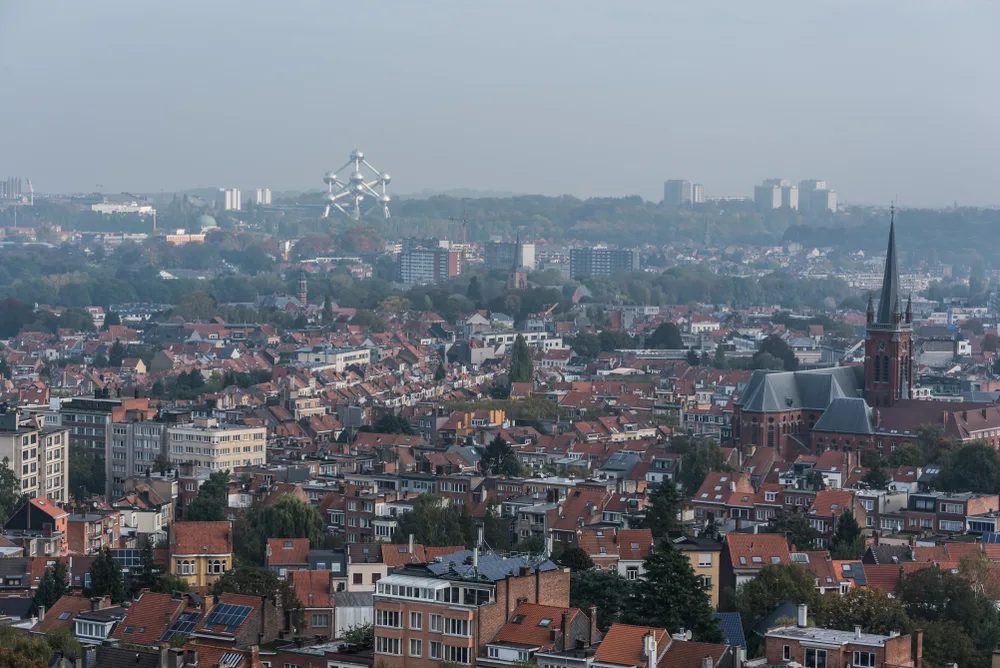TRUE researchers highlight the importance of real-world vehicle emissions testing at European conference

Researchers presented findings from TRUE’s real-world emissions testing campaigns at the 2025 Transport and Pollution Conference in Paris to highlight the role of these innovative technologies.
The 26th edition of the Transport and Pollution international conference (TaP 2025) took place in Paris, France earlier this month, focusing on emissions from the transport sector and their impact on air quality and public health.
This year’s forum featured ‘assessment and modeling of emissions and trends’ as a key theme. Yoann Bernard, program lead with the International Council on Clean Transportation (ICCT), TRUE’s technical partner, joined six other world-leading academic experts to discuss the future of remote sensing as a tool to ensure real-world vehicle emissions continue to decrease across Europe. This timely conversation follows the European Commission’s proposal for a revised roadworthiness package that would require member states to use remote sensing as a screening tool to identify high emitters.
The panel brought together experts from academia and policy who have pioneered remote sensing research over the past 30 years.
What’s next for remote sensing in Europe?
Experts deliberated the benefits and challenges of three remote sensing techniques as tools for ensuring real-world vehicle emissions remain low: 1) roadside remote sensing; 2) point sampling; and 3) plume chasing. They concluded that all three technologies offer unique ways to understand vehicle emissions. (Read a detailed explanation of each technique on our Remote Sensing 101 page.)
Roadside remote sensing can offer a snapshot into hundreds of thousands of vehicles and measure common pollutants such as nitrogen oxides, hydrocarbons, carbon monoxide and smoke. Point sampling, on the other hand, offers flexibility in measuring multiple pollutants, including particle number and black carbon. It is a curbside technique where fast-response instruments measure pollutants from dispersing exhaust plumes of passing vehicles by extracting air samples and routing them through analyzers.
Plume chasing, the technique whereby a measurement vehicle ‘chases’ a target vehicle while directly sampling its exhaust for a period of time, allows for richer data collection from individual vehicles, which offers huge potential as a targeted enforcement tool for catching individual high-emitters.
The TRUE Initiative uses all three approaches in its work in order to maximize the sample size and scope, ensure that desired pollutants are examined, and work most effectively in different regulatory situations.
Finding the right mix
During the session, the expert panel debated which remote sensing technique is most useful for keeping real-world emissions low. While some emphasized the need for defining pollutants of interest rather than measurement techniques, others stressed the practicality of certain methods like plume chasing for more targeted surveillance and enforcement of high emitters on the road.
“Roadside technology offers two key pathways to reduce real-world emissions from on-road vehicles,” reflected Mr. Bernard during the panel. “First, it enables the identification of individual high-emitters during their lifetime ahead of the next periodical technical inspection, while adding a critical element of surprise that helps deter tampering.
Second, its statistical power, as demonstrated by the TRUE Initiative, lies in the analysis of millions of measurements, allowing researchers and regulators to monitor fleet-wide emissions performance and prevent another Dieselgate.”
All in all, there was agreement among experts on one key point, that using the right mix of technologies will be crucial for gaining deeper insights into how vehicles actually perform in the real world. Different techniques complement each other: remote sensing is best suited for broad fleet screening, plume chasing for targeted enforcement, and point sampling for detailed pollutant analysis, including those hard-to-measure pollutants.
As cities and countries work to improve urban air quality, having multiple tools in the toolbox means they can better understand which vehicles are emitting the most and develop smarter, more effective policies to clean up the air. The conversation in Paris showed that the future of emissions monitoring isn’t about picking one perfect technology, it’s about strategically using different remote sensing approaches together to get a clearer picture of what’s really happening on the roads today.
A global perspective

Also during the event, Mallery Crowe, associate researcher with the ICCT, showcased how plume chasing technology was used to conduct the first assessment of real-world vehicle emissions in Uganda. Ms. Crowe shared insights into TRUE’s recent study in Kampala, which utilized this technique as more than a tool for catching high emitters, but for a comprehensive assessment of fleet emissions in the country’s capital.
The study was carried out in close partnership with the United Nations Environment Programme and a local team including researchers from Makerere University, as well as national and city government officials. This novel remote sensing approach informed real-world policy conversations in Kampala, and since its publication, the Ugandan Ministry of Works and Transport has announced the re-commencement of its vehicle inspection program, kicking off with government fleets. It’s an encouraging sign for Uganda as they work toward implementing routine vehicle inspections across all vehicle types.
Expanding future research
The Transport and Pollution Conference also highlighted exciting new research frontiers, including investigations into noise pollution and non-exhaust vehicle emissions from tires, brakes, and road surfaces, plus rail transport emissions. These emerging areas, many of interest for future TRUE campaigns, remind us that cleaning up transportation expands beyond what comes out of the tailpipe. As our understanding grows, so does our ability to tackle the full spectrum of transport’s environmental impact.



